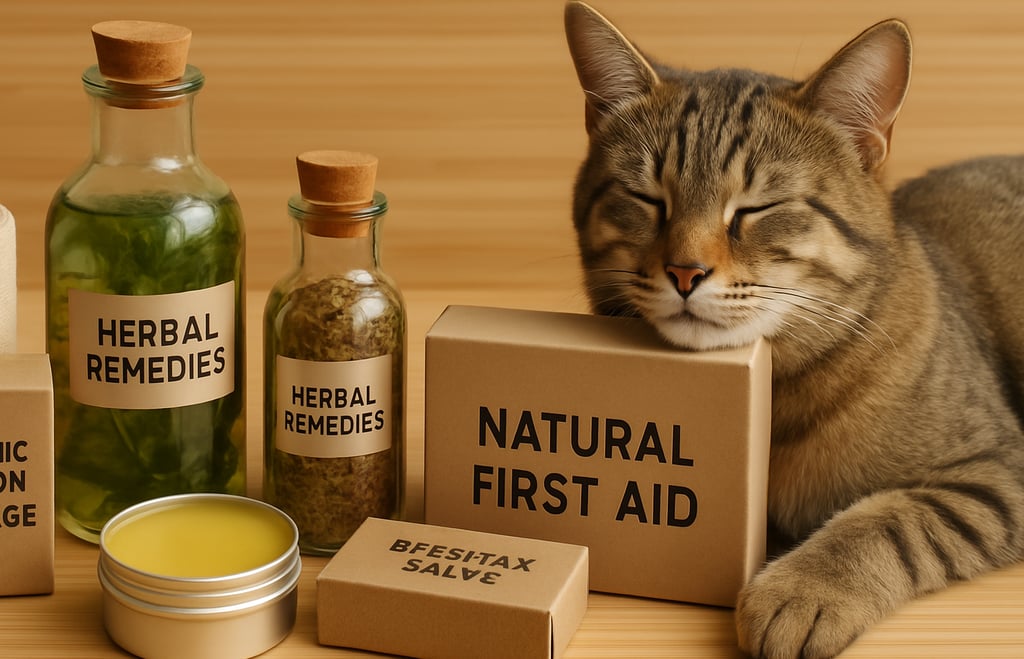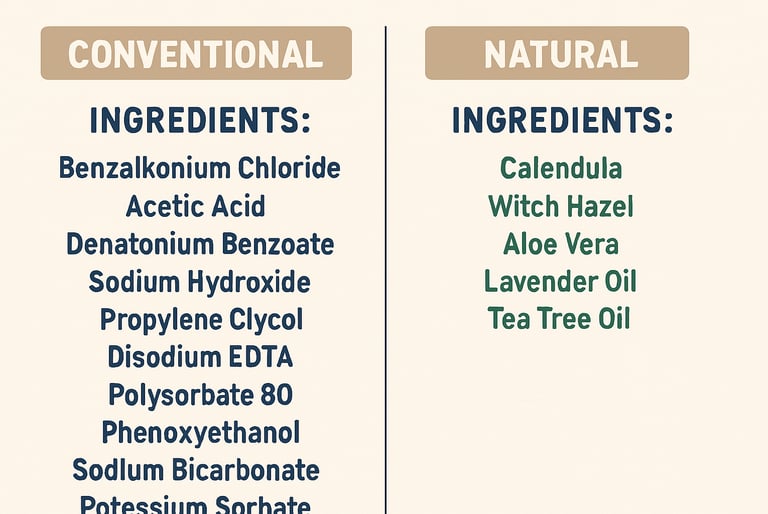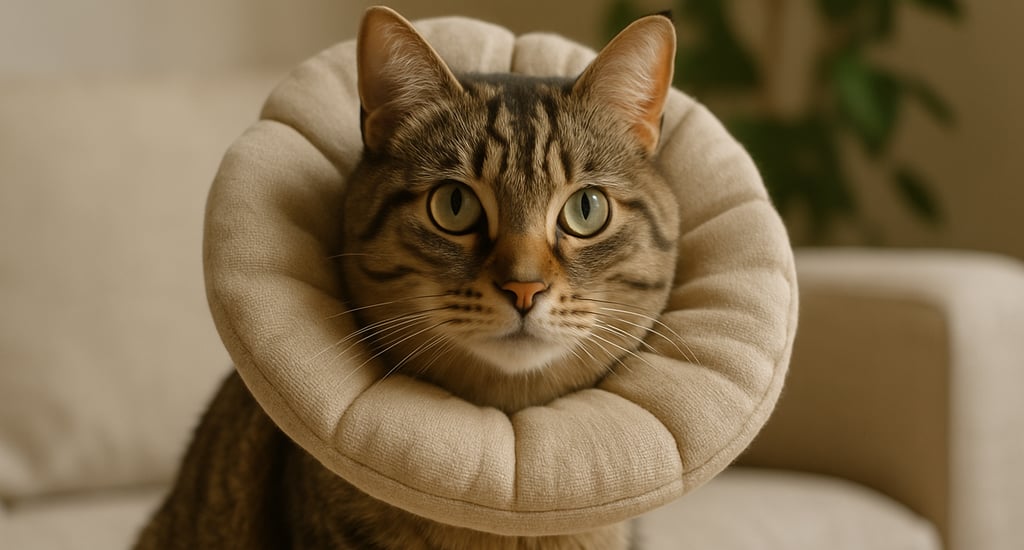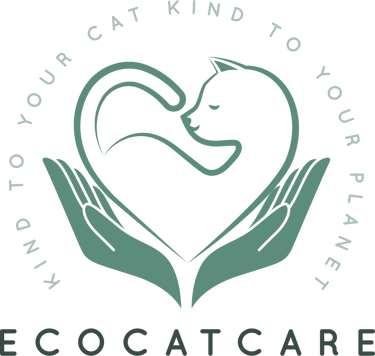The Eco-Friendly Advantage: Why Natural First Aid is Better for Your Cat & the Planet
SAFE & NATURAL CARE FOR MINOR EMERGENCIES


The choices we make for our cats' health care can impact both their wellbeing and our planet's future. Discover how natural first aid offers a gentler approach that benefits your feline companion while reducing environmental harm.
When it comes to caring for our cats, many of us are increasingly aware of how our choices affect not just our pets' health, but also the world around us. Conventional pet first aid products often contain synthetic chemicals, come wrapped in single-use plastics, and may be tested on animals. Natural alternatives offer a more sustainable and often gentler approach to addressing minor health issues in our feline companions.
This article explores the compelling advantages of choosing natural first aid options for your cat, from reduced chemical exposure to decreased environmental impact. We'll examine how these choices align with eco-conscious values while providing effective care for common minor issues.
The Problem with Conventional Pet First Aid Products
Before exploring the benefits of natural alternatives, it's important to understand the potential drawbacks of many conventional pet care products:
Environmental Concerns
Conventional pet first aid and health products often come with significant environmental baggage:
Packaging Waste: Most commercial products come in single-use plastic containers that end up in landfills or, worse, our oceans and waterways.
Chemical Runoff: Synthetic ingredients can enter water systems through manufacturing processes or disposal, potentially harming aquatic ecosystems.
Resource-Intensive Production: Many synthetic ingredients require petroleum derivatives and energy-intensive manufacturing processes.
Transportation Footprint: Centralized production and global distribution networks create substantial carbon emissions.
Health Considerations
Beyond environmental concerns, conventional products may pose health considerations for both cats and humans:
Synthetic Chemicals: Many commercial products contain artificial preservatives, fragrances, and active ingredients that may cause irritation or adverse reactions in sensitive cats.
Harsh Antiseptics: Some common antiseptics can damage healthy tissue while killing bacteria, potentially slowing the healing process.
Antibiotic Resistance: Overuse of antibiotic ointments for minor issues contributes to the growing problem of antibiotic resistance.
Ingestion Risks: Cats groom themselves constantly, potentially ingesting topical products that may contain ingredients not meant for internal use.
The Natural First Aid Advantage
Natural first aid approaches offer numerous benefits that address these concerns while providing effective care for minor issues:
1. Gentler on Sensitive Systems
Cats have unique physiologies that make them particularly sensitive to certain chemicals. Their liver lacks some enzymes that humans and dogs have for metabolizing toxins, making them more vulnerable to adverse effects from synthetic compounds.
Natural remedies typically:
Contain fewer ingredients, reducing the risk of reactions
Work with the body's natural healing processes
Cause less irritation to sensitive tissues
Present lower risks if accidentally ingested during grooming
For example, a simple saline solution (salt water) can effectively clean minor wounds without the harsh effects of some antiseptics. Similarly, Manuka honey provides antimicrobial properties for minor cuts without the potential side effects of antibiotic ointments.
2. Reduced Chemical Burden
Every synthetic chemical we introduce into our homes adds to the overall chemical burden on our bodies, our pets, and our planet. Natural first aid options help reduce this burden in several ways:
Fewer Synthetic Compounds: Natural remedies typically contain plant-based ingredients rather than laboratory-created chemicals.
Recognizable Ingredients: Most natural remedies use ingredients you can actually pronounce and understand.
Multipurpose Solutions: Many natural remedies serve multiple functions, reducing the need for numerous specialized products.
Lower Toxicity: Natural options generally break down more readily in the environment without leaving harmful residues.
Consider aloe vera gel as an example: this single, natural substance can soothe minor burns, provide moisture to dry skin, and help calm irritation—all without synthetic preservatives, fragrances, or colors.
3. Sustainable Sourcing and Production
Many natural first aid ingredients come from renewable plant sources that can be grown and harvested sustainably:
Renewable Resources: Plant-based ingredients can be regrown, unlike petroleum-derived synthetic compounds.
Lower Energy Requirements: Natural ingredient processing typically requires less energy than synthesizing artificial compounds.
Biodegradable Components: Natural ingredients break down more readily in the environment after use or disposal.
Potential for Local Sourcing: Many natural remedies can be sourced locally or even grown at home, reducing transportation emissions.
For instance, calendula (pot marigold) can be grown in many home gardens, harvested sustainably, and used to create soothing salves for minor skin irritations—all with minimal environmental impact.
4. Reduced Packaging Waste
Natural first aid approaches often involve significantly less packaging waste:
Bulk Ingredients: Many natural remedies can be purchased in bulk with minimal packaging.
Reusable Containers: Homemade remedies can be stored in glass jars or other reusable containers.
Longer Shelf Life: Many dried herbs and essential ingredients for natural remedies have extended shelf lives, reducing the frequency of replacement and associated packaging.
Multipurpose Products: Natural remedies that serve multiple functions reduce the need for numerous individually packaged products.
By making your own simple saline solution for wound cleaning, for example, you eliminate the need for individually packaged antiseptic wipes that generate waste with each use.
5. Alignment with Holistic Health Philosophy
Natural first aid aligns with a holistic approach to cat health that considers:
Whole-Body Wellness: Addressing the underlying causes of issues rather than just symptoms.
Preventative Care: Focusing on maintaining health to prevent problems before they occur.
Minimal Intervention: Using the gentlest effective approach rather than overtreatment.
Reduced Stress: Many natural approaches are less stressful for cats than conventional treatments.
This philosophy recognizes that our cats' health is interconnected with their environment, diet, stress levels, and overall lifestyle—just as our planet's health is interconnected with our daily choices and actions.
Practical Applications: Natural First Aid in Action
Let's explore how natural first aid principles can be applied to common minor cat health issues:
Minor Wound Care
Conventional Approach:
Commercial antiseptic sprays or wipes containing alcohol or chlorhexidine
Antibiotic ointments
Plastic bandages and wraps
Natural Approach:
Gentle cleaning with homemade saline solution (1/2 teaspoon sea salt in 1 cup boiled, cooled water)
Medical-grade Manuka honey for its natural antimicrobial properties
Organic cotton gauze secured with paper tape if covering is necessary
Environmental Benefit: Reduced chemical runoff, less plastic waste, and lower risk of contributing to antibiotic resistance.
Digestive Upset
Conventional Approach:
Over-the-counter medications in plastic packaging
Synthetic anti-diarrheal products
Artificially flavored electrolyte solutions
Natural Approach:
Slippery elm bark powder (1/4 teaspoon mixed with water for a 10-pound cat)
Bone broth made from organic ingredients for hydration and nutrients
Plain canned pumpkin (not pie filling) for fiber
Environmental Benefit: Renewable plant-based ingredients, reduced packaging, and support for organic farming practices.
Skin Irritations
Conventional Approach:
Steroid creams for inflammation
Medicated shampoos with synthetic ingredients
Plastic Elizabethan collars to prevent licking
Natural Approach:
Colloidal oatmeal baths for itching
Calendula-infused oil for minor irritations
Soft fabric recovery collars when necessary
Environmental Benefit: Biodegradable ingredients, reduced synthetic chemical use, and reusable or compostable materials.
Building Your Eco-Friendly First Aid Kit
Creating a sustainable first aid kit for your cat involves thoughtful choices about both contents and containers:
Sustainable Containers
Glass Jars: Repurpose clean glass jars for storing salves, powders, and liquid remedies.
Tin Containers: Small metal tins provide durable, plastic-free storage for balms and salves.
Organic Cotton Bags: Use small cloth bags for storing dried herbs and bandage materials.
Bamboo Containers: Sustainable bamboo boxes make excellent first aid kit containers.
Recycled Paper Labels: Label everything clearly using recycled paper or cardboard.
Essential Natural Contents
Cleaning & Disinfecting:
Sea salt (for making saline solution)
Medical-grade Manuka honey
Witch hazel (alcohol-free)
Soothing & Healing:
Aloe vera gel (pure, without additives)
Calendula flowers or prepared oil
Slippery elm bark powder
Colloidal oatmeal
Bandaging & Application:
Organic cotton gauze
Unbleached paper medical tape
Bamboo or wooden application tools
Organic cotton swabs
Tools:
Stainless steel scissors (durable and long-lasting)
Bamboo tweezers
Glass eyedropper
Digital thermometer (unavoidably contains some plastic but is a long-term investment)
Reference Materials:
Printed guide on recycled paper
Emergency contact information
Monitoring journal for tracking symptoms and treatments
Balancing Natural Care with Conventional Medicine
While natural first aid offers many benefits, it's important to recognize its limitations. A truly sustainable approach to cat health balances natural care with appropriate conventional veterinary medicine:
Appropriate Uses for Natural First Aid:
Minor cuts and abrasions
Occasional mild digestive upset
Small areas of skin irritation
Preventative care
Supportive care during recovery (with veterinary guidance)
When Conventional Veterinary Care is Essential:
Emergencies of any kind
Infections requiring antibiotics
Chronic or recurring conditions
Any issue that doesn't improve with natural care
Preventative care like vaccinations
Regular wellness examinations
The most sustainable approach is one that uses the right tool for each situation—sometimes that's a natural remedy, and sometimes it's conventional veterinary medicine.
The Ripple Effect of Your Choices
Every time you choose a natural first aid option over a conventional one, you create positive ripples that extend beyond your home:
Market Influence: Increased demand for natural pet products encourages companies to develop more sustainable options.
Reduced Pollution: Fewer synthetic chemicals enter water systems through manufacturing and disposal.
Resource Conservation: Less plastic production means reduced petroleum use and associated environmental impacts.
Knowledge Sharing: As you learn about natural options, you can share this knowledge with other pet parents, amplifying the positive impact.
Holistic Thinking: The mindset that considers both your cat's health and environmental impact often extends to other areas of life.
By making thoughtful choices about your cat's first aid and minor health care, you're contributing to a larger movement toward sustainability and environmental responsibility.
Getting Started with Natural First Aid
Transitioning to a more natural approach doesn't have to happen all at once. Consider these steps for gradually incorporating eco-friendly first aid practices:
Start Simple: Begin with basic items like saline solution for cleaning minor wounds or colloidal oatmeal for skin irritations.
Replace as You Go: As conventional products run out, replace them with natural alternatives rather than discarding usable items.
Research Thoroughly: Ensure any natural remedy you use is safe for cats, as some natural substances that are safe for humans can be harmful to felines.
Consult Professionals: Discuss your interest in natural approaches with your veterinarian, who can provide guidance specific to your cat's needs.
Document Results: Keep notes on what works well for your cat's minor issues to build your knowledge base.
Prioritize Prevention: The most sustainable approach is preventing health issues through proper nutrition, environmental enrichment, and regular wellness care.
By thoughtfully incorporating natural first aid options into your cat care routine, you're making choices that benefit both your beloved feline and the planet you share.
Embrace a fully sustainable approach to your cat's health. Our First-Aid Handbook guides you every step of the way, providing detailed information on natural remedies, when to use them, and when to seek veterinary care. The Sustainable Cat First-Aid & Minor Issue Handbook empowers you with the knowledge to make confident, eco-conscious decisions about your cat's health and wellbeing.
Disclaimer: This article is for informational purposes only and is not a substitute for professional veterinary advice. Always consult with your veterinarian before beginning any treatment program or if you're unsure about your cat's condition. Natural remedies, while generally gentle, can still cause adverse reactions in some animals.




Sustainable Cat Care
At EcoCatCare, we provide resources that help cat parents discover how sustainable choices can create healthier, happier lives for their feline companions while contributing to a healthier planet.
EcoCatCare © 2025. All rights reserved
